Romanian Deadlift vs Conventional Deadlift: Differences Explained
The word “deadlift” is almost universally pictured as a heavy vertical pull off the ground.
However, with how popular the movement is, it’s no surprise that quite a number of different variations have been developed over the decades. One of the most popular of these is the Romanian deadlift - of which beats out even the classic deadlift in certain aspects.
In this article, the differences between Romanian and conventional deadlifts will be discussed, covering facets like basic muscular emphasis to minute differences in execution. Before picking one exercise over the other, ensure that you fully understand which exercise better fits your needs.
What is the Romanian Deadlift?
The Romanian deadlift is a free weight compound exercise performed so as to train the posterior chain muscle groups.
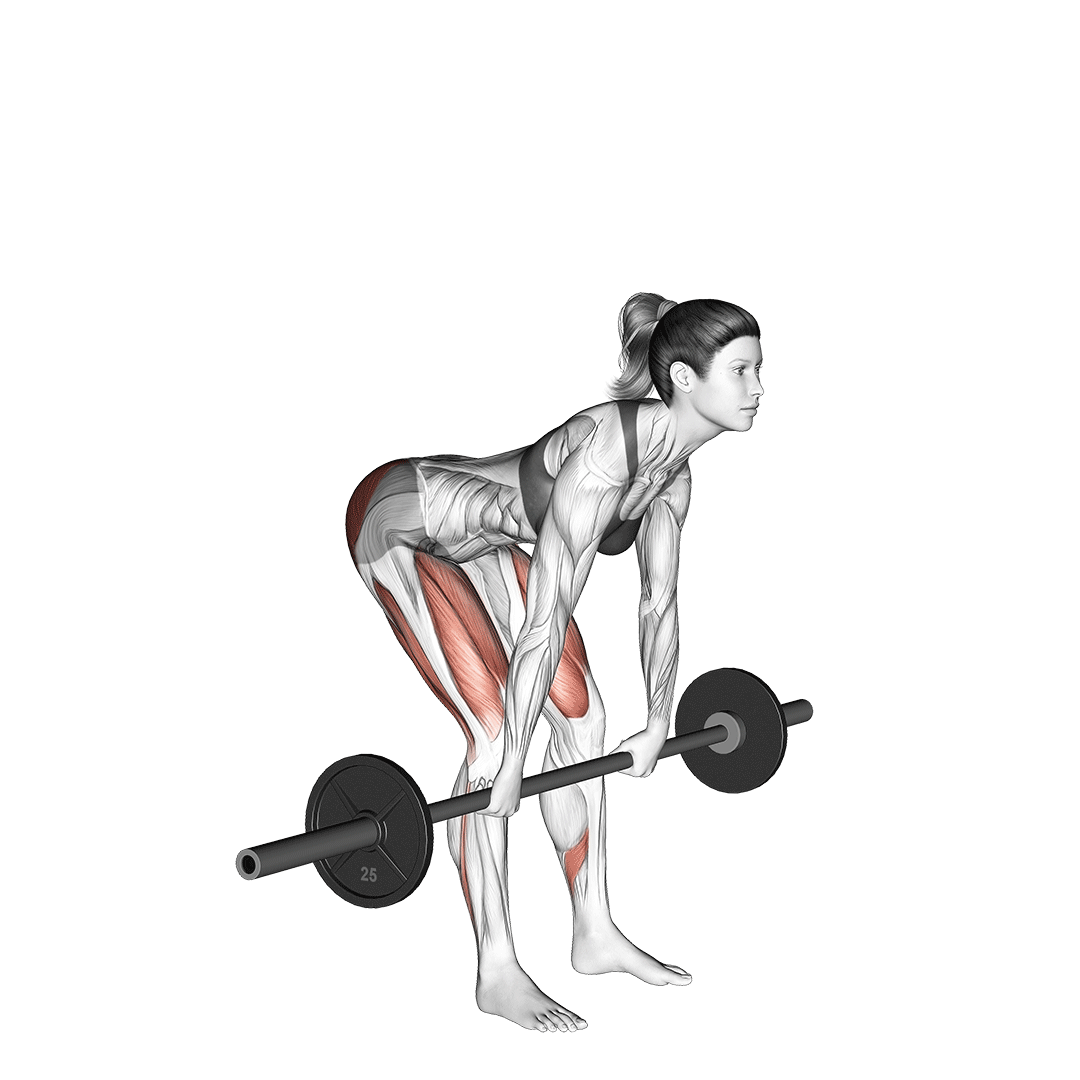
It is most often performed with the use of a barbell loaded with a moderate amount of weight, and often plays the role of either a supplementary movement or as the main compound exercise in a workout.
In comparison to other deadlift variations, the Romanian deadlift can be immediately identified by the fact that it begins at the top position, features a shorter range of motion and requires a more horizontal torso orientation at maximum depth.
What is the Conventional Deadlift?
The conventional deadlift (or just “deadlift”) is also a free weight multi-muscle exercise performed for training the lower body’s muscles.
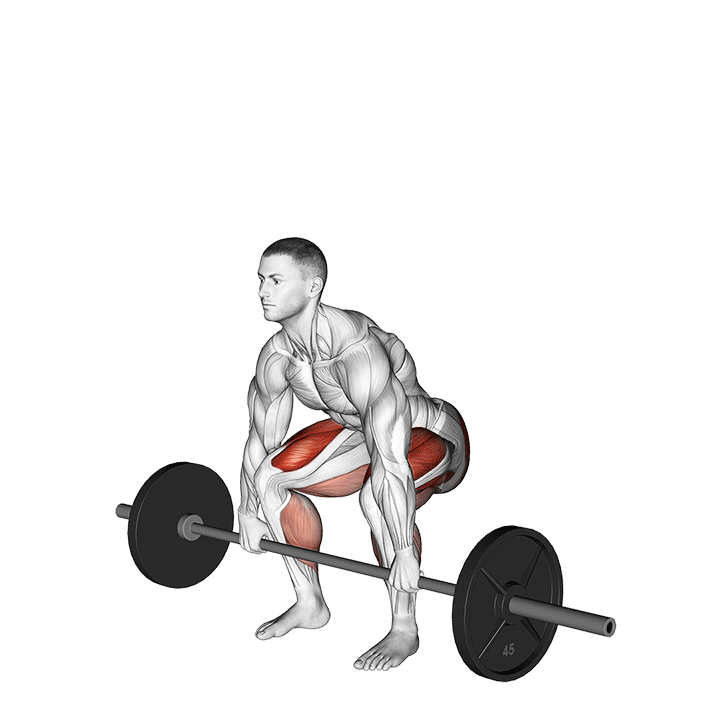
Unlike Romanian deadlifts, conventional deadlifts are almost invariably used as a primary compound movement due to the sheer intensity and difficulty of each repetition.
The conventional deadlift is seen as the baseline form of deadlift that most other variations are based off of. It involves a comparatively narrower stance, a more upright torso orientation and greater knee flexion than is seen with Romanian or stiff-legged deadlifts.
Romanian Deadlift vs Conventional Deadlift - Muscular Recruitment
The main difference between Romanian and conventional deadlifts lie in the muscles they target.
Because of differences in range of motion and execution, Romanian deadlifts will tend to work the posterior chain in a more isolated manner - although this doesn’t mean that deadlifts won’t recruit them as well.
Glute and Hamstring Emphasis
As mentioned, the Romanian deadlift largely ignores other muscle groups in favor of the glutes and hamstrings of the posterior chain. This is because very little knee flexion is present when it is performed, causing only those aforementioned muscles to be targeted.
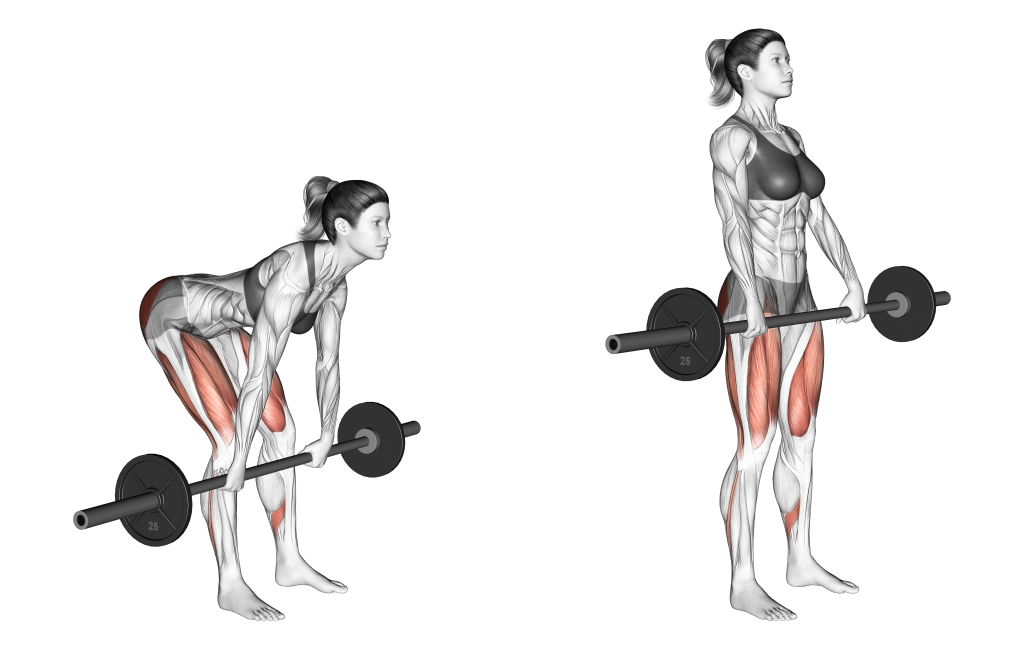
In comparison, the conventional deadlift does indeed work the same muscles to a highly intense degree - but not in as isolated a manner. Other muscles (mainly the quadriceps) are targeted in a similarly intense fashion.
So, if performing a strictly posterior chain workout, then the Romanian deadlift is the better choice.
Quadriceps Emphasis
Because the Romanian deadlift involves very little movement of the knees at any point, the conventional deadlift is a comparatively better choice for quadriceps recruitment.
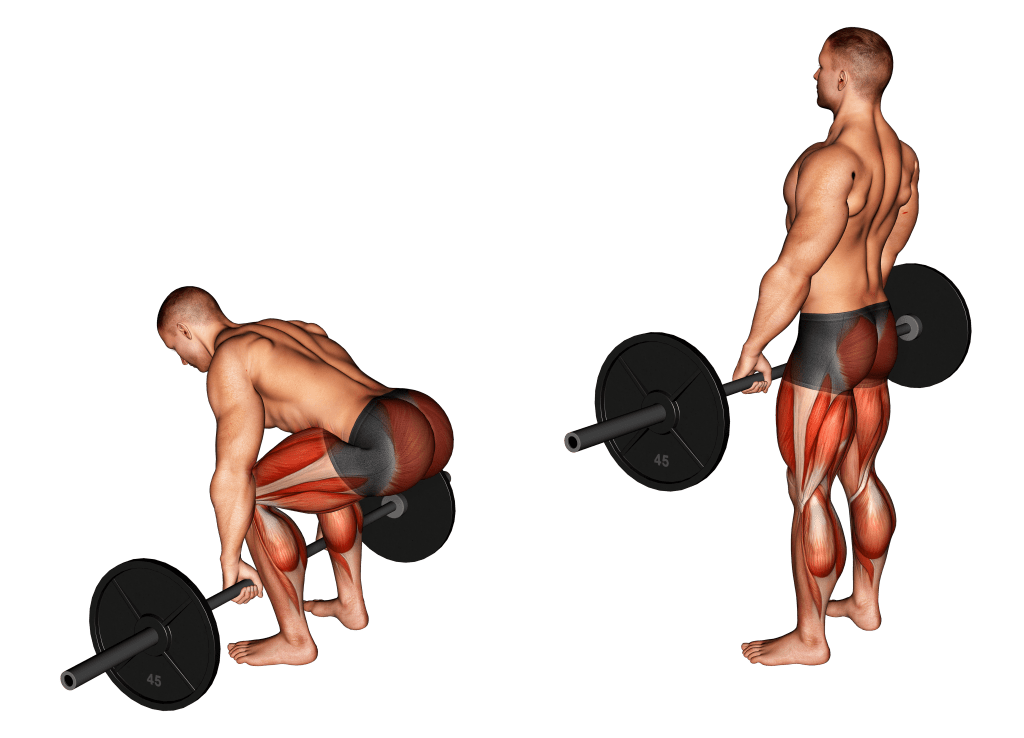
During a conventional deadlift, the lifter will need to intensely extend their knees from a squatting stance as they pull the barbell from the floor. This targets the quads to quite an extent while simultaneously targeting the muscles of the posterior chain.
Although the regular deadlift isn’t quite a quadriceps isolation exercise, it nonetheless does target the quadriceps - making it the better choice over the Romanian deadlift.
Stabilizer Muscle Recruitment
Both the Romanian deadlift and conventional deadlift target the same stabilizer muscles, only to varying degrees of intensity. Stabilizer muscles are used to keep the body and source of resistance in the optimal position as other muscles contract dynamically.
In the case of both deadlift variants, the erector spinae, obliques and abdominals all fulfill such a role.
However, the conventional deadlift works the erector spinae and lower back muscles to a slightly lesser degree due to a less horizontal torso orientation. The Romanian deadlift taxes such muscles more. Otherwise, in regards to other stabilizer muscles, the two are practically identical.
Romanian Deadlift vs Conventional Deadlift - Stance, Mechanics and Kinematics
Although it is ultimately the muscular recruitment that sets the two deadlift variations apart, this difference is a result of their individual stance, kinematics and overall movement pattern.
Starting Position
At the beginning of each repetition, the Romanian deadlift is performed with the barbell already lifted as the performer is in a standing position.
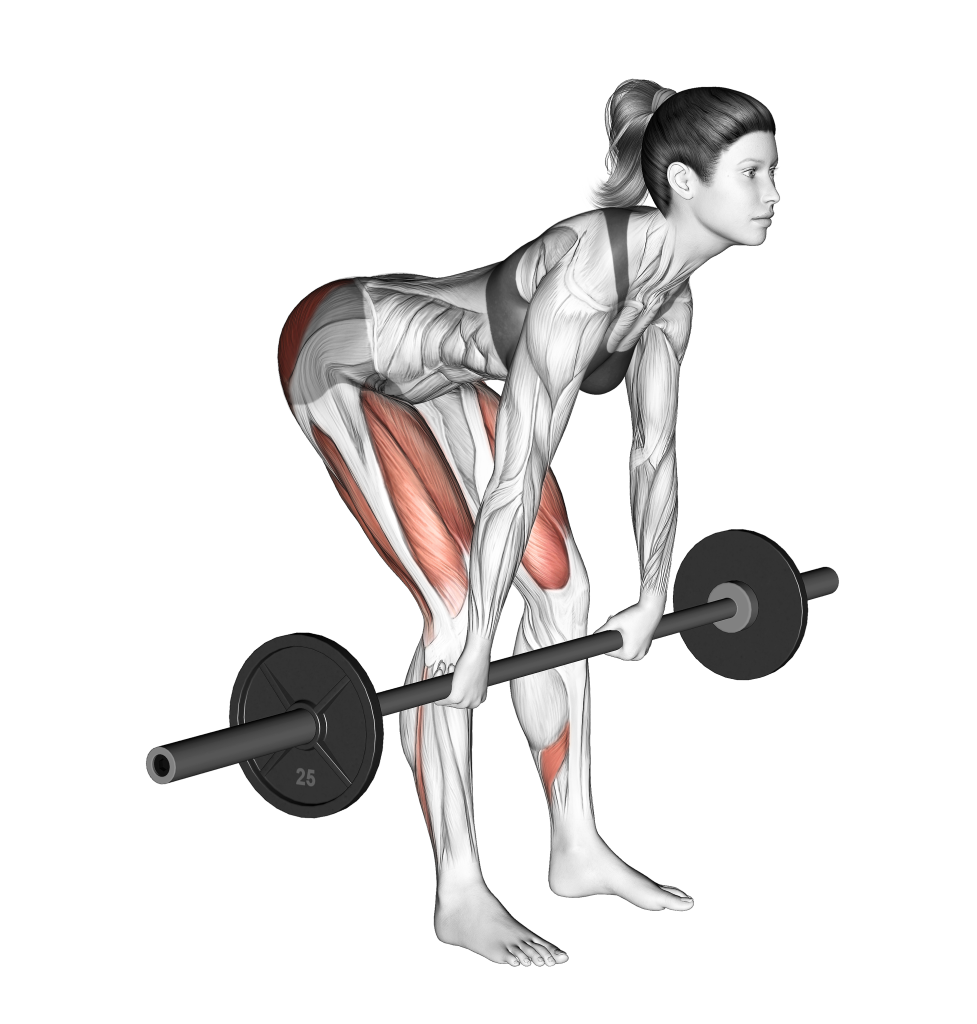
In comparison, conventional deadlifts begin with the lifter pulling the barbell off the floor.
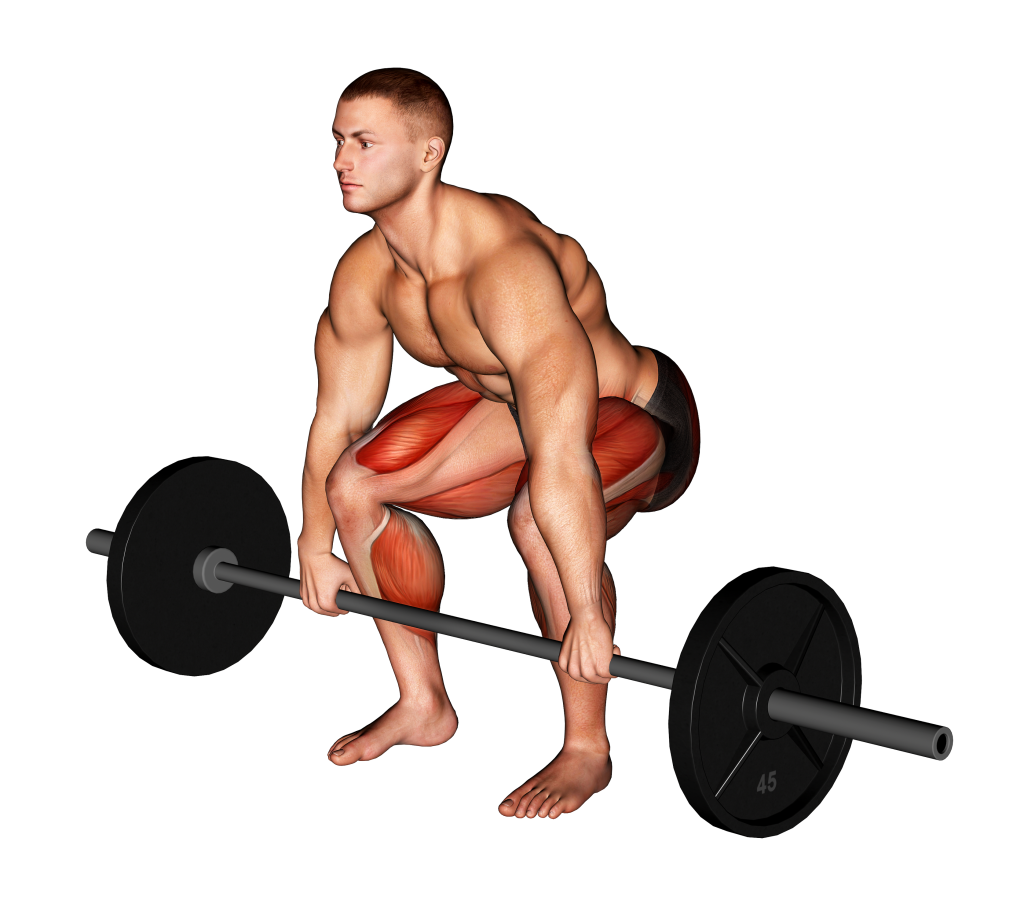
Because of such drastically different starting positions, the Romanian deadlift will primarily begin with an eccentric muscular contraction, whereas the regular deadlift a concentric one.
Furthermore, starting in an already standing position means that the overall movement is done more slowly and with a considerably less explosive amount of force. Conversely, the conventional deadlift will often require a powerful drive through the floor to pull the bar upwards.
Range of Motion
In terms of total range of motion and how far the bar moves from its starting position, the Romanian deadlift is somewhat shorter.
It begins with the lifter holding the bar in a standing position and will feature a mid-point where the bar is around mid-shin before being drawn back upwards.
The conventional deadlift, on the other hand, has a somewhat larger range of motion as the bar begins on the floor and is pulled until the lifter is in a standing position. This engages more muscle groups to a greater range, allowing for a somewhat greater training stimulus for the posterior chain muscles.
Knee Flexion ROM
Likewise, the conventional deadlift features not only a larger total range of motion, but also greater movement at the knee joints.
The Romanian deadlift is not meant to involve any significant level of knee flexion whatsoever.
Instead, the movement should be primarily driven by hip flexion and hinging, where the glutes are pushed back and the torso levered forwards.
During the Romanian deadlift, the knees are bent only enough to properly engage the hamstrings. Whereas with the conventional deadlift, the knees begin in a state of at least 90 degree flexion before being extended into a straightened position at the top of the movement.
Of course, hip hinging is still a vital part of the conventional deadlift - only to a lesser degree than the Romanian variation.
Shoulder Positioning
Because the Romanian deadlift involves a more horizontal torso angle on account of greater hip hinging, the shoulders will be considerably further forward over the bar and feet than is seen with regular deadlifts.
More forward shoulder positioning means that the lifter will need to pay closer attention to keeping the bar against their body, and that a somewhat greater risk of mid-back rounding is present.
Comparatively, the conventional deadlift largely keeps the shoulders immediately over the bar, meaning that the risk of rounding is more present in the upper or lower back, rather than the middle.
Romanian Deadlift vs Conventional Deadlift - Applicability, Carryover and Programming
Tallying up the individual differences between the Romanian and conventional deadlift give us a better picture of their roles in a program.
Whether they are suitable as a primary movement, their compatibility and the level of intensity to be expected are the most important ones to consider.
Maximum Loading Capacity
Because the conventional deadlift involves more muscle groups and a generally more powerful pull, it allows for significantly more weight to be moved with each repetition. In fact, there are very few exercises that can be reasonably performed with more load than the deadlift itself.
In comparison, the Romanian deadlift will often be performed with approximately 70% of their conventional deadlift working weight.
A lower loading capacity isn’t necessarily a bad thing, however. So long as training intensity is maintained and attention is paid to reaching a full range of motion, lifting less weight does not equate to worse results.
Role in a Training Program
The Romanian and conventional deadlift each fulfill different roles within a correctly structured training program. This dictates not only their position in the order of exercises, but also the intended training intensity, perceived exertion and how much weight should be loaded.
With a more isolated recruitment pattern, lesser loading capacity and shorter range of motion, the Romanian deadlift is most effective when programmed as an accessory or supplementary movement.
In comparison, the deadlift is almost invariably placed as the foremost exercise in a training program, where it functions as the main source of training intensity and stimulus.
Performing Both Romanian and Conventional Deadlifts Together
Despite their differences, the Romanian deadlift and regular deadlift actually mesh quite well when performed together in a workout session.
So long as the conventional deadlift is prioritized due to its greater intensity, the Romanian deadlift can be performed so as to better target the posterior chain or maximize training volume therein without quadriceps involvement.
Other Factors to Consider
Apart from the topics we’ve discussed earlier in this article, the following aspects should be considered when deciding on either exercise.
Injury Risks
Although both the Romanian and conventional deadlift can lead to injury when performed incorrectly, the type of injury most likely to occur varies somewhat between the two.
Because very little weight is distributed to the quadriceps and knees during a Romanian deadlift, there is a somewhat greater risk of injury to the middle back - as well as a greater risk of hamstring tears due to the greater range at which they are stretched.
Likewise, with conventional deadlifts, much of the risk of injury revolves around the lower back and its underlying section of spine. These, of course, are in addition to the usual injuries related to highly intense exercises that involve abdominal bracing.
Applicability to Powerlifting
Both the conventional and Romanian deadlift serve a purpose in powerlifting training, but it is the conventional deadlift that is ultimately more important.
In powerlifting competitions, it is either a sumo or conventional deadlift that is performed as one of three competition lifts. While a Romanian deadlift can supplement and improve the execution of these exercises, it is practicing the movement itself that will create the most benefit.
So - if you’re a powerlifter who can only program one deadlift variation in, pick the one that is an exact replica of your competition deadlift.
Functional Strength and Real-World Carryover
If seeking purely to develop functional strength for athletic competition or real world activities, the conventional deadlift is a somewhat better choice on account of its more comprehensive muscular development.
The majority of movements involving the lower body will not be solely isolated to the glutes and hamstrings.
Often, the quadriceps and the knee joint itself will play a pivotal role - meaning that in order to improve performance outside of the gym, you’ll need to use an exercise that targets all three major muscle groups.
Of course, once again, it is entirely possible to perform both for even greater results. However, priority should nonetheless be given to the conventional deadlift.
Muscular Hypertrophy and Time Under Tension
Likewise, if performing either exercise solely for inducing muscular hypertrophy, the Romanian deadlift may just be a better exercise - but only if you’re looking to build mass in the posterior chain.
The Romanian deadlift is less intense with each repetition, features a larger stretch at the hamstrings and generally allows for a longer time under tension with each repetition. This is the perfect situation for inducing muscular hypertrophy.
However, just as it is effective for building mass in the posterior chain, it also is quite ineffective at developing the quadriceps solely because they are not actually involved in the movement.
The conventional deadlift is more of a strength and power exercise, rather than one well-suited to building muscle mass. Remember that your choices are not solely constrained to either the Romanian or conventional variation, if hypertrophy is what you’re seeking.
Which Deadlift Variation is Better?
If you’ve been following along this entire article, you’ve likely got a pretty good idea of why neither deadlift variation is necessarily better than the other.
Within the correct circumstances, one exercise is indeed more effective, but these do not coincide and as such both deadlifts serve dramatically different purposes. So much so, in fact, that they can be performed together without much difficulty or injury risk.
For general explosiveness, power and strength development, the conventional deadlift is superior. For hypertrophy and isolated recruitment of the glutes and hamstrings, the Romanian deadlift is a better choice.
Outside of these training goals, it is also important to consider other aspects of these exercises. The Romanian deadlift is considerably more forgiving on the knees than its conventional cousin, for example.
Ensure that you are not only meeting the needs of your training program but also accounting for joint impact, differences in complexity and any history of injury that you may have.
References
1. Coratella G, Tornatore G, Longo S, Esposito F, Cè E. An Electromyographic Analysis of Romanian, Step-Romanian, and Stiff-Leg Deadlift: Implication for Resistance Training. Int J Environ Res Public Health. 2022 Feb 8;19(3):1903. doi: 10.3390/ijerph19031903. PMID: 35162922; PMCID: PMC8835508.
2. Lee S, Schultz J, Timgren J, Staelgraeve K, Miller M, Liu Y. An electromyographic and kinetic comparison of conventional and Romanian deadlifts. J Exerc Sci Fit. 2018 Dec;16(3):87-93. doi: 10.1016/j.jesf.2018.08.001. Epub 2018 Aug 11. PMID: 30662500; PMCID: PMC6323186.
3. Martín-Fuentes I, Oliva-Lozano JM, Muyor JM. Electromyographic activity in deadlift exercise and its variants. A systematic review. PLoS One. 2020 Feb 27;15(2):e0229507. doi: 10.1371/journal.pone.0229507. PMID: 32107499; PMCID: PMC7046193.
